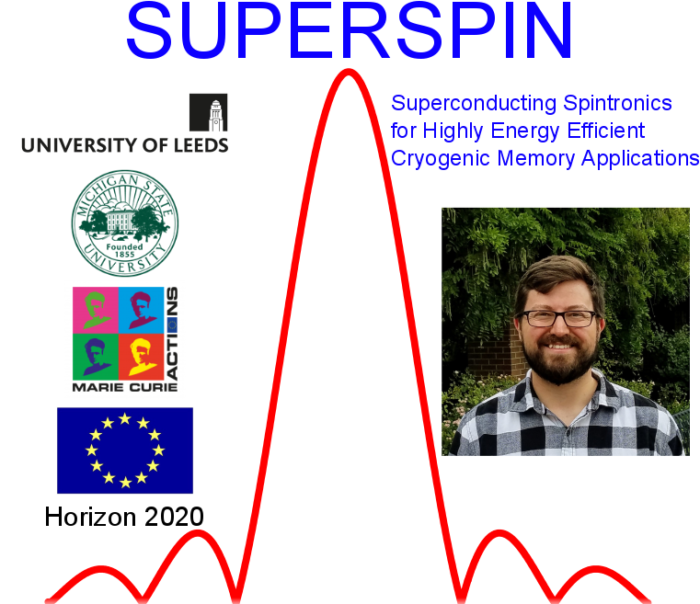SuperSpin - a Marie Skłodowska-Curie Global Fellowship
The dissipation of heat in traditional silicon (CMOS) based electronics is a major source of inefficiency and environmental impact. Superconductors are, by nature, dissipationless. Computing via logic circuits based on Josephson junctions is also faster, but the largest remaining problem is the lagging development of low-temperature memory. To achieve the promised efficiency increases of these computers requires a new type of low-temperature memory architecture. Traditionally considered competing phenomena, when artificially juxtaposed a wealth of physics at the interface between superconductors and ferromagnets emerges. Spin-triplet Cooper pairs are capable of surviving inside a ferromagnet over much longer distances than the regular (spin-singlet, anti-parallel) pairs. This new type of Cooper pair is the building block for super-spintronics; leading to a dissipationless spin-current combined with spintronic devices.
Researchers
Publications
[1] N. Satchell and N.O. Birge “Supercurrent in ferromagnetic Josephson junctions with heavy metal interlayers” Phys. Rev. B 97, 214509 (2018)
[2] M.G. Flokstra, R. Stewart, N. Satchell, G. Burnell, H. Luetkens, T. Prokscha, A. Suter, E. Morenzoni, S. Langridge, and S.L. Lee “Observation of Anomalous Meissner Screening in Cu/Nb and Cu/Nb/Co Thin Films” Phys. Rev. Lett. 120 (24), 247001 (2018)
[2] N. Satchell “Controlled superconducting vortex creation raises hope for a dissipationless memory device” Supercond. Sci. Technol. 32, 020501 (2019) (Invited Viewpoint)
[3] N. Satchell, R. Loloee and N.O. Birge “Supercurrent in ferromagnetic Josephson junctions with heavy-metal interlayers. II. Canted magnetization” Phys. Rev. B 99, 174519 (2019)
[4] R. Stewart, M.G. Flokstra, M. Rogers, N. Satchell, G. Burnell, D. Miller, H. Luetkens, T. Prokscha, A. Suter, E. Morenzoni, S.L. Lee “Controlling the electromagnetic proximity effect by tuning the mixing between superconducting and ferromagnetic order” Phys. Rev. B 100 (2), 020505 (2019)

